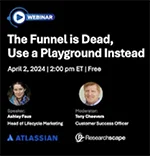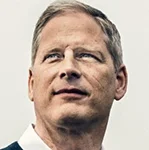|
|
There’s no shortage of opinions regarding what great client service looks like. A quick scan of recent articles uncovers a handful of predictable suggestions for agencies seeking to up their customer service game: respond to emails promptly, don’t overpromise, anticipate needs. While each has merit, aren’t these really just the price of entry? They aren’t likely to set you apart from — or ahead of — your competitors.
My take on what makes a truly outstanding agency partner is shaped in no small part by my background. Spending 15-plus years in-house, holding marketing and PR roles for tech brands, I made the leap to the agency world. Having crossed the chasm, I now realize there are several things my agency partners probably didn’t know about life on the brand side. This knowledge could’ve helped them better understand how to be a great partner.
PR isn’t the whole universe
Whether at a large public company, nonprofit or somewhere in between, I never had a role in which PR was my sole focus. Unfailingly, I had — and many of your client contacts likely have — a multitude of responsibilities that extended beyond PR. If your contact, let’s call him George, also has to tackle employee communications, digital marketing, demand generation, brand management, public affairs, event marketing or other duties, you should know this.
Why? For one, understanding George’s role may help explain why he isn’t responding promptly to every request, why he’s distracted on your weekly call and why his focus on PR (or your agency’s discipline) ebbs and flows. Appreciating the demands on George’s time and attention enables you to adjust your approach and maximize your value. For example, if George drives employee communications at his company, he’d probably appreciate it if you recommend tactics to merchandise media placements internally. If he's responsible for generating sales leads, you’ll want to offer creative ideas for leveraging thought leadership content as a call to action for email campaigns.
As a client, I had the luxury of focusing on a single corporate brand and unified suite of solutions. I wore many hats within marketing and communications. On the agency side, we typically focus on a single functional discipline — PR, advertising, branding, etc. — but we have to apply this expertise to multiple different brands. Perspective is key, and being cognizant of the client’s viewpoint goes a long way toward enhancing the way we as agency professionals engage with and service them.
We all serve many masters
Agency teams live and breathe this. Every day we work on an assortment of accounts with distinct objectives, disparate deadlines and different problems. What isn’t always evident is that our client contacts often must appease multiple stakeholders. During one stint as a director of marketing, I reported to heads of marketing, product management, business development, sales and even engineering. With each came unique personalities, as well as varied views on the role of PR, what PR is (and isn’t) and the role of an agency in executing against business objectives. Add trying to please innumerable stakeholders beyond your direct report and things become really fun.
Awareness of this reality can help explain what otherwise may appear as your contact’s scattered approach to agency management. George is probably being asked to deliver results that vary by stakeholder, is frequently operating with incomplete information, and trying to respond to dynamic business objectives. Against this fluctuating backdrop, he is likely doing his best to provide clear direction to his agency partners.
A little empathy for George can go a long way. Think of ways to help him navigate internal bureaucracy. If his stakeholders are unlikely to read the full-blown, integrated program proposal, offer an executive recap. If he needs buy-in from multiple colleagues, arm him with talking points that appeal to each one’s pain points. When he’s asked to justify increased investment, provide him with an assessment of what his brand’s competitors are doing to achieve similar results.
Ask smart questions
As agency professionals, we all want to put our best foot forward every time. We strive to meet and exceed our clients’ expectations, knowing that every day we have to demonstrate their confidence in us is well placed. My sense is that, for some, this translates into always saying, “Yes.” In my experience, this isn’t always the best approach.
When George calls asking for a gut check on a crazy new concept he’s pondering or instructs you to develop a proposal to support a new product launch, of course you’re going to listen and respond. But don’t forget to ask the right follow-up questions to ensure your feedback is on point and your recommendation adds substantive value to George’s business. What’s the context for his ask? Have business priorities changed? What are the year-one revenue objectives for the widget? Has the product team identified challenges to market acceptance? What would the ideal outcome look like? Is there openness to considering alternate approaches?
Asking smart questions helps position us as strategic advisors rather than order-takers. When we do this, our clients are more apt to see us as extensions of their teams — as allies and friends who help them and their business succeed.
The next time your colleagues express frustration because your client still hasn’t given final approval on the press release slated to go out tomorrow or changed the scope of the project you were working on mid-stream, remain calm. Better yet, suggest they put themselves in the client’s shoes. Maybe a leadership change put a wrench in things. Perhaps resources were reallocated to launch a new sales channel. Think about what you can do to make George’s job easier, help position him for success and support him as he weathers the inevitable storms of corporate brand life. Doing so will reaffirm the value of your partnership and place you at the head of the competitive pack.
***
Anita Gomes, vice president of Havas Formula’s High Tech division, is a veteran B-to-B marketing communications leader. A former Havas Formula client, her extensive experience includes roles at top brands including Qualcomm, Sony and Gateway, as well as within the nonprofit and government sectors.

 Anita Gomes
Anita Gomes
 Abandon traditional content plans focused on a linear buyer progression and instead embrace a consumer journey where no matter which direction they travel, they get what they need, stressed marketing pro Ashley Faus during O'Dwyer's webinar Apr. 2.
Abandon traditional content plans focused on a linear buyer progression and instead embrace a consumer journey where no matter which direction they travel, they get what they need, stressed marketing pro Ashley Faus during O'Dwyer's webinar Apr. 2. Freelance marketers and the companies that hire them are both satisfied with the current work arrangements they have and anticipate the volume of freelance opportunities to increase in the future, according to new data on the growing freelance marketing economy.
Freelance marketers and the companies that hire them are both satisfied with the current work arrangements they have and anticipate the volume of freelance opportunities to increase in the future, according to new data on the growing freelance marketing economy. Home Depot's new attempt to occupy two market positions at once will require careful positioning strategy and execution to make it work.
Home Depot's new attempt to occupy two market positions at once will require careful positioning strategy and execution to make it work. Verizon snags Peloton Interactive chief marketing officer Leslie Berland as its new CMO, effective Jan. 9. Berland succeeds Diego Scotti, who left Verizon earlier this year.
Verizon snags Peloton Interactive chief marketing officer Leslie Berland as its new CMO, effective Jan. 9. Berland succeeds Diego Scotti, who left Verizon earlier this year.  Norm de Greve, who has been CMO at CVS Health since 2015, is taking the top marketing job at General Motors, effective July 31.
Norm de Greve, who has been CMO at CVS Health since 2015, is taking the top marketing job at General Motors, effective July 31.


 Have a comment? Send it to
Have a comment? Send it to 
No comments have been submitted for this story yet.